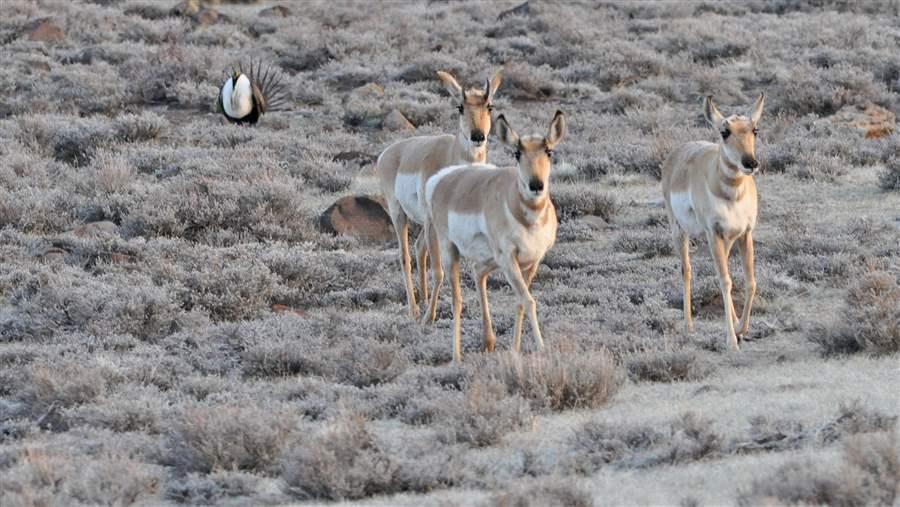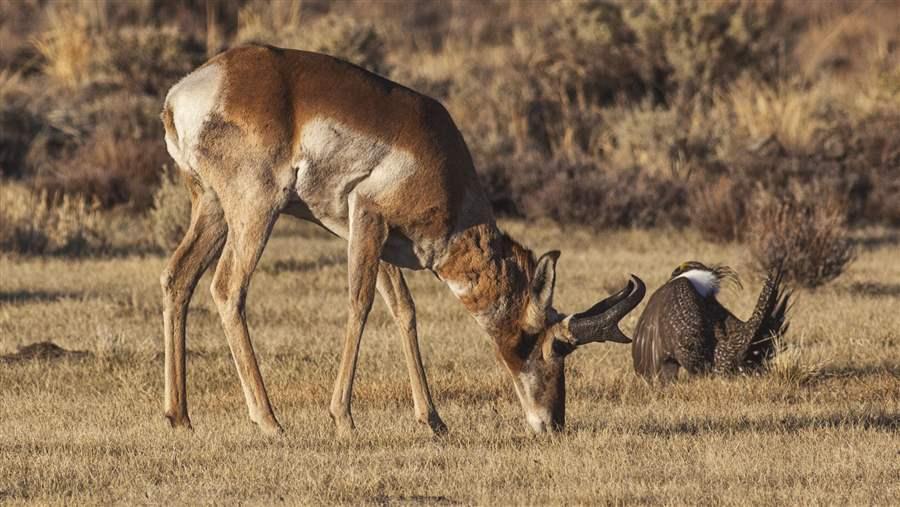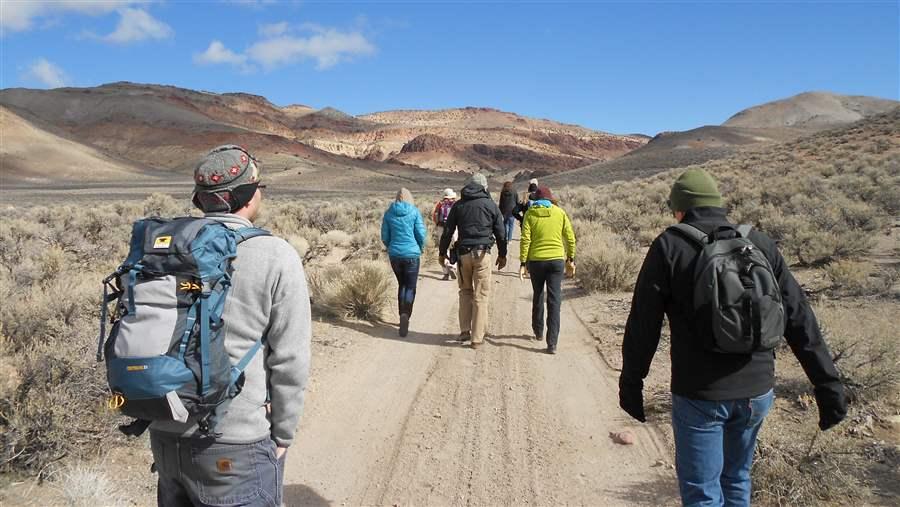Sage-Grouse Habitat Protected by Historic Obama Administration Plans
 Jeannie Stafford/U.S. Fish and Wildlife Service
Jeannie Stafford/U.S. Fish and Wildlife ServiceSagebrush habitat—home to pronghorn antelope, the greater sage-grouse, and hundreds of other species—stretches across 10 Western states.
The U.S. Department of Interior’s Bureau of Land Management issued final Records of Decision on Sept. 22 to implement historic plans that responsibly balance conservation with energy development on millions of acres of public lands across 10 Western states. This is the largest conservation effort ever undertaken by the Bureau of Land Management and the biggest land protection initiative of the Obama administration.
- These strong, science-based plans will protect the greater sage-grouse, more than 350 other species of wildlife—including pronghorn, golden eagles, elk, and mule deer—and the Western way of life.
- Sagebrush landscape is an important economic driver. Camping, fishing, hunting, hiking, and many other recreational activities on these public lands generate an annual economic output of $1 billion.
- A bipartisan poll conducted in June found that 75 percent of voters in counties where greater sage-grouse live believe the bird’s habitat should be conserved.
 Bob Wick
Bob WickPronghorn antelope and sage-grouse depend on healthy sagebrush habitat for their survival.
 The Pew Charitable Trusts
The Pew Charitable TrustsSagebrush country provides world-class hiking, hunting, fishing, camping, and birding



